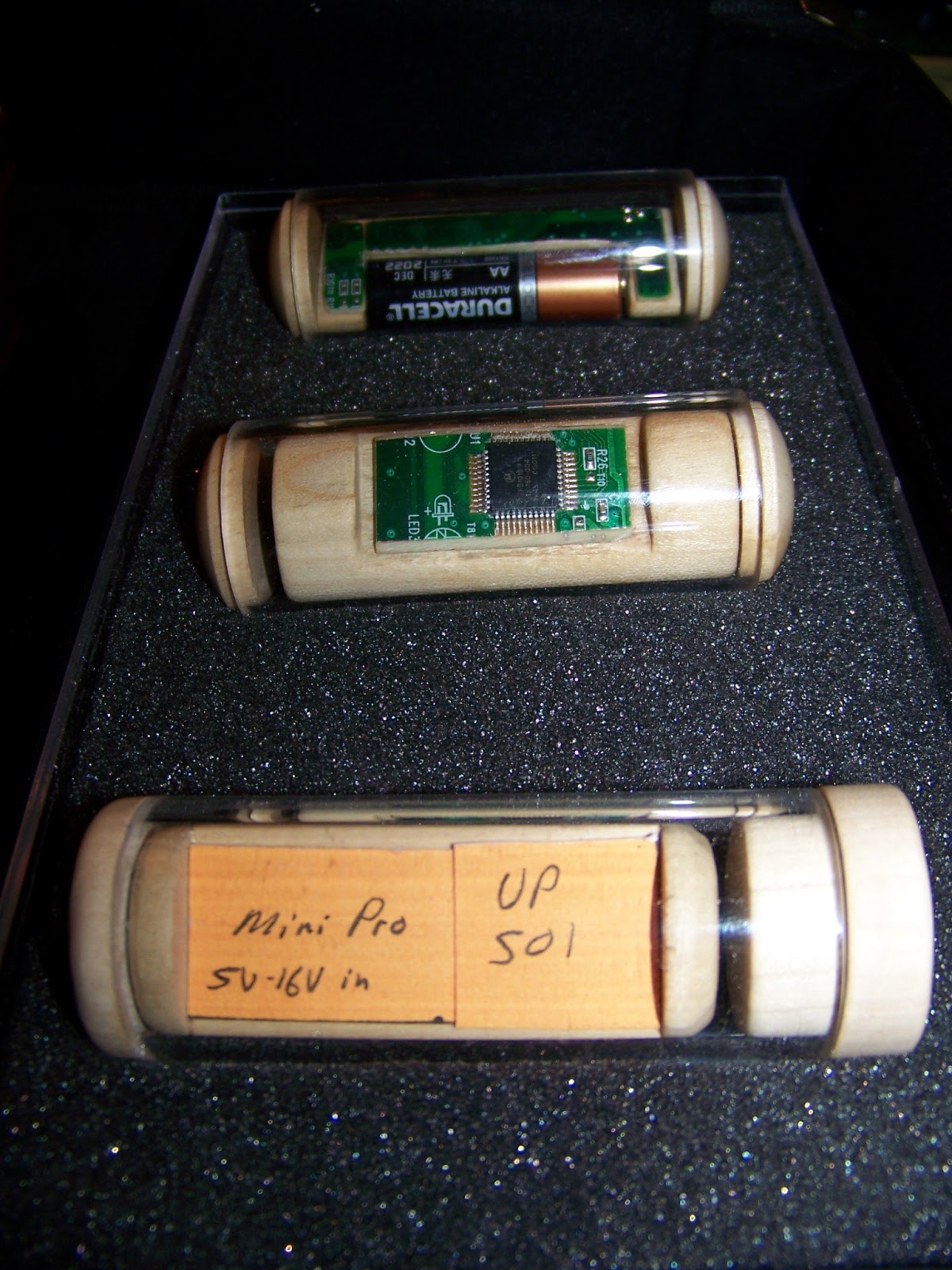* small enough to carry but big enough to keep track of
* unique enough to be interesting
* easily sourced materials
* scalable so that I can produce many of them
* economical so that they can be deployed in numbers
* waterproof
* modifiable
* capable of being turned on by research participants but not off
* materials that will enhance, not impair, satellite signals
* keep GPS antenna facing skyward
* won't roll off a table
With those parameters in mind, here is the first round of prototypes that use 0.125 inch wall thickness acrylic tubing (1 inch ID, 1.25 inch OD), waxed wood/cork and templates of the components. Wood protects against static and is easily worked with for prototypes and scaling up at moderate levels. The acrylic lets participants see what's inside, rather than going with a 'mysterious black box' approach. I can also include ID labels inside the tube where it will be protected but readable. The top two photos are prototyping sketches of a UP501 GPS module and an OpenLog SDmicro board where I'm experimenting with bypassing a microcontroller and writing direct from GPS to card - lower power use, increased simplicity, more compact size.





No comments:
Post a Comment